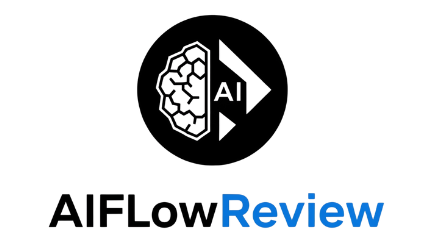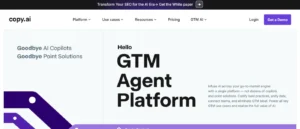Clear writing can make or break your AI projects. Whether you are summarizing model results, sending client updates, or shipping docs your team will actually read, the right assistant saves time and prevents costly confusion.
I have tested hundreds of AI writing helpers on AI Flow Review, and I keep getting asked the same thing: Grammarly Business vs Pro, which is worth it? Short answer, Pro is the better value for individuals or small teams on a budget, Business is worth it for larger teams that need admin controls, brand consistency, and stronger security.
In this guide, I will compare features, pricing, and real needs in 2025, so AI enthusiasts, developers, and teams can pick with confidence. Expect the key differences upfront, like AI prompt limits (Pro gives a set monthly allotment, Business lifts it), brand and style tools, team analytics, and enterprise-grade controls.
If you write solo or run a tiny squad, Grammarly Pro covers advanced suggestions, rewriting, and plagiarism checks at a lower cost. If you manage multiple contributors or handle sensitive data, Grammarly Business earns its price with user management, SSO, detailed logs, and policy controls.
Stick around as I break down grammarly business vs pro with simple side-by-sides, real scenarios, and clear next steps. By the end, you will know exactly which plan fits your workload, your stack, and your budget.
What Makes Grammarly Pro Great for Solo AI Writers
 Photo by Matheus Bertelli
Photo by Matheus Bertelli
If you write alone, you need speed, clarity, and tools that do not get in the way. In the grammarly business vs pro debate, Pro hits the sweet spot for solo AI writers. It trims fluff, tightens tone, and keeps your drafts moving without the cost of team features you will not use.
Key Features of Grammarly Pro That Boost Your Writing
Grammarly Pro adds practical helpers that clean up drafts fast, especially when you are shaping prompts, chatbot replies, or technical notes.
- Vocabulary enhancers: Pro highlights bland or overused words and suggests sharper options. Example: If your chatbot reply says, “We will look into your request soon,” Pro might suggest, “We will review your request shortly.” It feels cleaner and more confident. When I tune system prompts, swapping “try” for “attempt” or “fix” for “resolve” can make instructions clearer and more consistent.
- Style guides: Set a target style (like business or casual) so suggestions stay on brand. Example: A raw message might read, “Error occurred, try again.” With a friendly business style set, Pro nudges it to, “Something went wrong, please try again.” That tone shift matters when you write chatbot scripts or onboarding tips. You get consistency across your app text, your docs, and your release notes without manual policing.
If you want a deeper look at how the AI suggestions work under the hood, skim the overview of AI at Grammarly. And if Grammarly Pro becomes your daily driver, balance your stack by reviewing our take in Grammarly Review 2024 so you can pair it with the right writing and chatbot tools.
Why Grammarly Business Shines for AI Teams and Companies

If you run an AI team, you need more than grammar fixes. You need control, visibility, and consistency across every PR description, model card, API doc, and user-facing prompt. This is where Grammarly Business pulls ahead in the grammarly business vs pro debate. It is built for scale, with tools that help leaders guide standards without slowing writers down. For the feature rundown, see the official pages for Grammarly for Business and the broader product features, then match them to your workflow below.
Team-Specific Tools in Grammarly Business You Can’t Miss
Grammarly Business adds admin-grade controls and team-level insights, so you can manage risk and raise quality at the same time.
- Admin controls that keep you in charge: Centralized user management, SSO, and role-based permissions. You set who can change style rules, who can invite users, and which integrations are allowed. Policy controls help lock down sensitive terms and guide acceptable usage across apps.
- Detailed analytics you can act on: The dashboard highlights adoption, suggestion acceptance, and key improvement areas. You see which teams overuse passive voice, which writers miss clarity targets, and which docs trigger the most rewrites. It turns writing quality into a measurable, coachable metric.
- Unlimited brand tones for true consistency: Define multiple tones that match your products and audiences. Example tones: friendly support replies, precise release notes, direct security advisories, and neutral technical docs. Writers pick the tone, and suggestions adapt in real time. No more guessing what “on brand” means.
Here is a simple example for AI developers tracking improvement across the team:
- Create a shared style guide with banned terms and preferred phrases. For instance, replace “AI magic” with “automated classification,” and standardize “fine-tuning” over “finetuning.”
- Add brand tones for support, docs, and research. Support uses a warm voice, docs stay concise, research sticks to objective language.
- Review monthly analytics. Track acceptance rate for clarity and tone suggestions, readability scores per team, and time saved per user.
- Run a weekly standup review. Pull one snippet from recent PR summaries and one from the docs backlog. Compare before and after versions, then log the delta in clarity, sentence length, and jargon use.
- Set a target, like “average reading level 8 to 9” for user-facing docs. Use the dashboard to confirm trends over the next sprint.
What you get is a clear loop. Define voice, measure output, coach the gaps, then watch the numbers move. If your writers ship both code and content, that change compounds sprint over sprint.
Bottom line, Grammarly Business gives leaders the knobs and dials that Pro cannot. If quality, speed, and brand consistency matter across dozens of hands, Business is the safer pick in grammarly business vs pro.
Grammarly Business vs Pro: Breaking Down the Differences

Here is the practical comparison I wish I had when I first weighed grammarly business vs pro. Pricing tells you whether it fits your budget, features decide if it fits your workflow, and the team setup makes or breaks adoption. Let’s map each one to real use cases.
Pricing Showdown: Is the Extra Cost for Business Justified?
Grammarly lists Pro as the entry point for individuals and small teams, while Business is aimed at groups that need admin control and security. The numbers are clear on the public pages, and the savings add up fast with annual billing.
- Pro pricing on the official page: $30 per month monthly, or $12 per user per month when billed annually. Source: Grammarly Prices and Plans and Pro cost details.
- Business pricing is seat based, starts at small team minimums, and varies by team size and term. Source: Grammarly Business Pricing and Plans.
Here is a quick snapshot for 2025 based on public info and common quotes.
| Plan | Monthly billing | Annual billing | Typical seats | AI prompt allowance |
|---|---|---|---|---|
| Pro | $30 per user | $12 per user | 1 to 149 | 2,000 prompts per user per month |
| Business | Quote based, often $15 to $25 per user | Often similar or lower per user for larger teams | 3+ seats | Unlimited prompts |
What annual savings look like in practice:
- Single user on Pro: $30 monthly versus $12 annual per month. You save $18 per month, which is about 60 percent. Yearly, that is $360 versus $144. Savings: $216.
- Five users on Pro: Monthly totals $1,800 per year. Annual plan totals $720 per year. Savings: $1,080 for the team.
- Ten users moving to Business: If your quote is $18 per user per month billed annually, that is $2,160 per year. If you needed unlimited prompts or SSO, this cost can be worth it compared with Pro’s 2,000 monthly prompts and no enterprise controls.
When does Business pay off:
- You need unlimited AI prompts across the team and push heavy AI rewrites every day.
- You require SSO, role-based permissions, audit logs, or centralized billing.
- You want shared brand controls and analytics at the org level.
- Your team starts at three seats or more and writes in tools where policy controls matter.
If your team is two writers who mostly draft emails and docs, Pro annual is the best value. If you manage eight or more writers across apps and need visibility, Business is the safer spend. For current pricing and limits, check the live plan pages at Grammarly Plans and Business pricing.
Feature Face-Off: What You Get Extra with Business
Most core edits and rewrites feel similar across Pro and Business. The gap shows up once you bring in people, policy, and risk. Here are the extras that matter when comparing grammarly business vs pro.
- Unlimited AI prompts: Pro includes 2,000 prompts per user per month. Business removes the cap, which helps teams that run AI rewrites, summaries, and tone shifts all day.
- Team analytics: See acceptance rates, clarity trends, and usage by user. This is how you coach writers, not guess. Spot where support drafts get wordy or where release notes drift in tone.
- Security and control: SSO, audit logs, user roles, and centralized policy controls. You decide who can invite, who can change style rules, and which integrations are allowed. The Business pricing page explains how plans tier these options.
- Shared style and tone at scale: Business lets you roll out brand tones and preferred words to everyone, then measure adoption.
- Policy guardrails to prevent leaks: You can flag sensitive terms, set do-not-use words, and reduce the chance that someone pastes internal strings into public text.
Real world example for AI tasks:
- A support team uses AI prompts for edits and summaries across 80 tickets a day. On Pro, the team hits the 2,000 prompt limit mid-month. On Business, unlimited prompts remove the cap, so managers do not juggle accounts or ration usage.
- A dev team writes model cards and API docs. With Business, SSO locks sign-in to your identity provider, audit logs capture access, and policy rules block phrases like internal project codenames. That helps reduce accidental data leaks in shared drafts.
If you write alone, these extras do not move the needle. If you lead a team, they save coaching time, tighten compliance, and protect your brand voice.
Who Wins for Your Needs: Solo or Team Setup?
Pick based on who writes, how often you use AI prompts, and what security you need. A few quick filters make the grammarly business vs pro choice simple.
Pro is the better fit if you:
- Write solo or with one partner.
- Want the best price per seat with strong AI rewrites.
- Can live with 2,000 AI prompts per user per month.
- Do not need SSO, audit logs, or strict policy controls.
Business is the smarter pick if you:
- Run an agency, support org, or dev team with at least three writers.
- Need unlimited prompts, shared style guides, and admin controls.
- Care about SSO, audit logs, and centralized permissions.
- Want analytics to coach teams and reduce rewrite cycles.
Ask yourself:
- How many writers will use it in 90 days?
- Will you hit 2,000 AI prompts per user per month?
- Do you need SSO or audit logs to meet security standards?
- Is brand consistency across products a priority this quarter?
If you checked yes on two or more, Business likely pays for itself. If not, Pro keeps costs low and speed high. For current plan details, always verify on the official pages for Grammarly pricing and Grammarly Business.
Conclusion
After testing both plans across real projects, my take is simple. For most individuals, Grammarly Pro hits the mark. It keeps drafts clean, tight, and on tone at a price that makes sense. For teams, Grammarly Business wins where control, visibility, and brand voice matter. You get admin tools, analytics, and shared style, which pays off once multiple writers touch the same content.
If you are still weighing grammarly business vs pro, match the plan to your workflow. Solo writer or tiny squad, go Pro and bank the savings. Team leads who need SSO, audit logs, unlimited prompts, and reporting, choose Business and skip the piecemeal fixes. Not sure yet, start with the free versions, run a one-week trial, and watch how often you hit prompt limits or need shared rules.
I recommend Pro for individuals who want affordable polish without extra overhead. I recommend Business for teams that need guardrails, insights, and scale. Set a simple test: count writers, estimate prompts per month, and name the security controls you really need. Your answer will be obvious.
Next steps that help: check AI Flow Review for more AI tool comparisons, or subscribe to our newsletter for updates, quick picks, and new head-to-heads. What would a 10 percent clarity gain do for your next release notes or model card? Pick your plan, give it a week, and measure the lift.

















